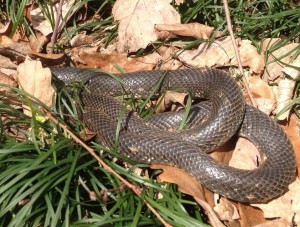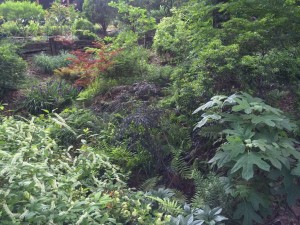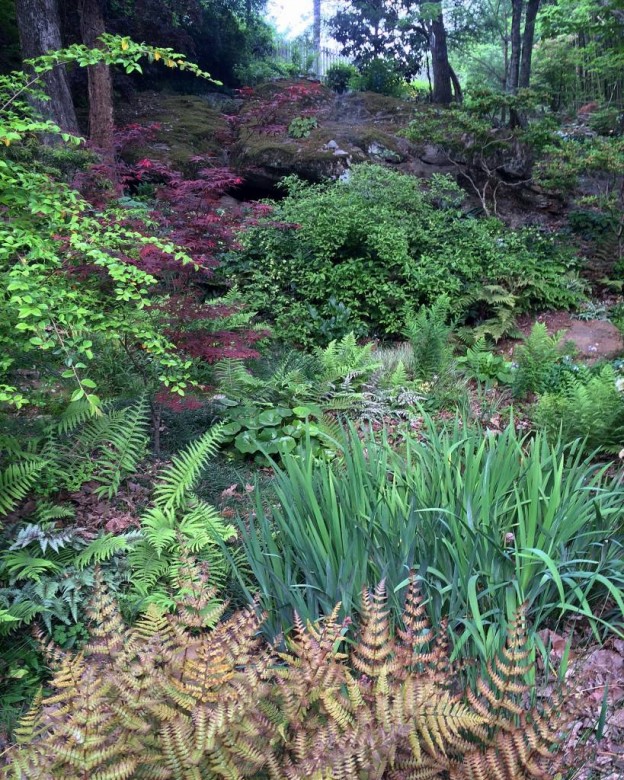
A very good snake to have, this is a non- venomous black rat snake.
The other day I got into a long discussion with some gardening friends (These are horticulturists, growers, and garden writers, who I respect immensely.) about snakes in the landscape. In fact, we’d just taken walks through each other’s respective gardens, along wooded paths, pine straw mulched areas, rock outcrops, and generally everywhere a snake could theoretically be encountered.
Soon we were swapping snake stories, including our encounters, our pet dog encounters with snakes, and various tales we’d heard from others. So many stories, in fact, that I emailed one of them that evening saying I thought I was really tempting fate by not having seen a snake yet (And it’s high summer!) and felt certain I was now due for the “big one.”
 In response, the next day (wonderful friend that she is) she sent me this link to the Savannah River Ecology Laboratory. It has some really good information on the identification of snakes, and, even though it is for Georgia and South Carolina, the maps also include Alabama. Take a look at the link, which has a lot of pictures and information, and follow the advice.
In response, the next day (wonderful friend that she is) she sent me this link to the Savannah River Ecology Laboratory. It has some really good information on the identification of snakes, and, even though it is for Georgia and South Carolina, the maps also include Alabama. Take a look at the link, which has a lot of pictures and information, and follow the advice.
I’m hoping you resolve not to kill every snake you see. Just like people, there are good and bad snakes, and, really, it seems they just want to be left alone. After all, they don’t want to mess with us; we’re a whole lot bigger than they are.
By Kris Blevons
This is a repost from a couple of years ago. However, I felt it was worth running again since snakes are always a hot topic, especially as the weather begins to heat up and they’re more active. Be careful when working in your garden or any over grown areas of your landscape. Don’t put your hand anywhere you can’t see it, and be alert. The pictures are of my woodland garden where I’ve seen non-venomous rat snakes that I’m happy to have because all the experts say they are territorial and keep poisonous copperheads away.

